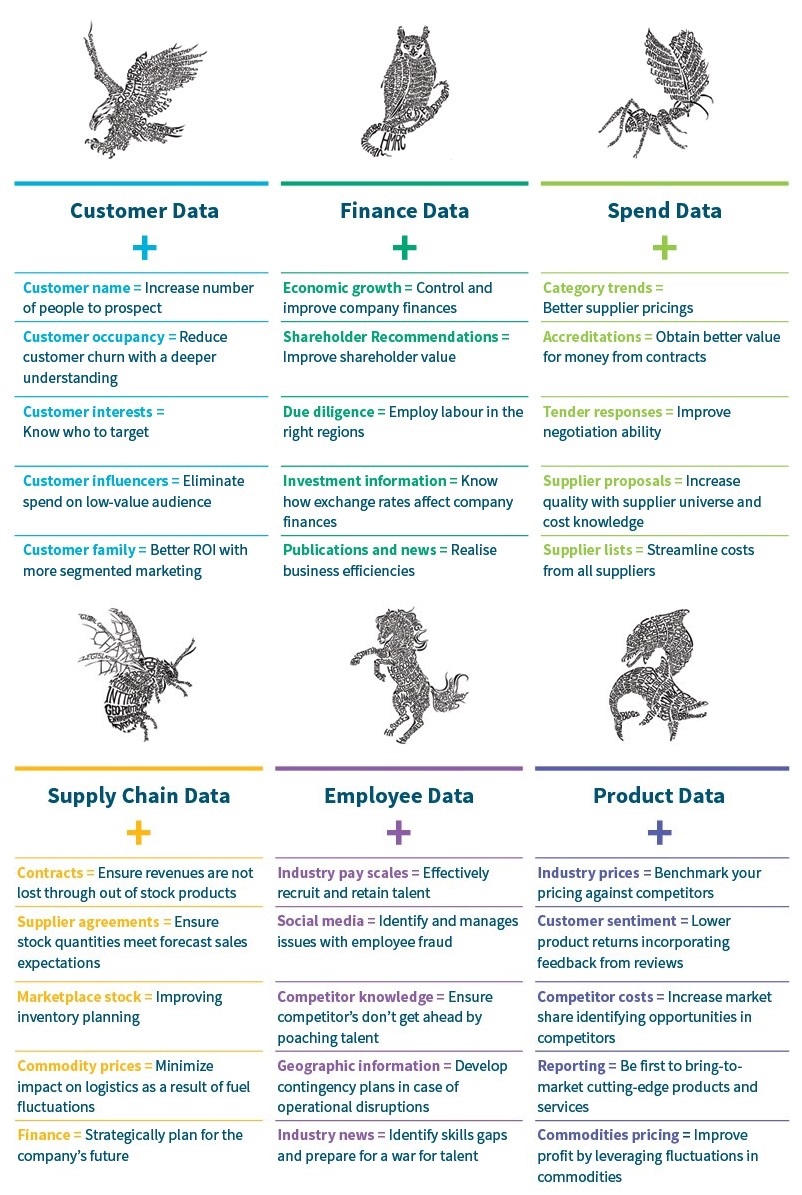How to create value from your different data sources

Only 23% of executives have closely aligned their organization’s data to business objectives, according to a research study commissioned by Rosslyn. This misalignment costs organizations dearly because employees lack the necessary insight to make informed decisions.
Obviously, something must change, but what?
After speaking to hundreds of organizations over the years, we believe there needs to be a renewed focus by business leaders on data, from maximizing existing internal data sources to preparing the data so it’s transformed into meaningful information. This requires looking at new approaches and technologies. It also requires a commitment and openness to change.
To help decision-makers, we have written a first-of-its-kind paper, “Data: The Art of the Possible”.

Unlike McKinsey, we don't estimate the theoretical value of big data in the pharmaceutical industry, for example. That won't solve your immediate problem of reducing the cost of drug research and development, or improving your ability to mitigate supply chain risks.
Our paper has been designed to serve as a reference guide to assist you in making everyday decisions. It’s here that you’ll learn what data sources you need to lower customer churn, improve employee retention and reduce product development time or costs.
Only here will you discover what value you can create by blending two distinct data sources together – from inside and outside of your organization.
However, before you play mad scientist or creative bartender by mixing different data types to create new information, you will read how to create a good data strategy that revolves around:
- Obtaining data-business alignment
- Understanding the alchemy of data
- Improving data quality
Have you read
Rosslyn Spend Management enables businesses to automatically aggregate, enhance and organise both structured and unstructured data. Rosslyn Spend.